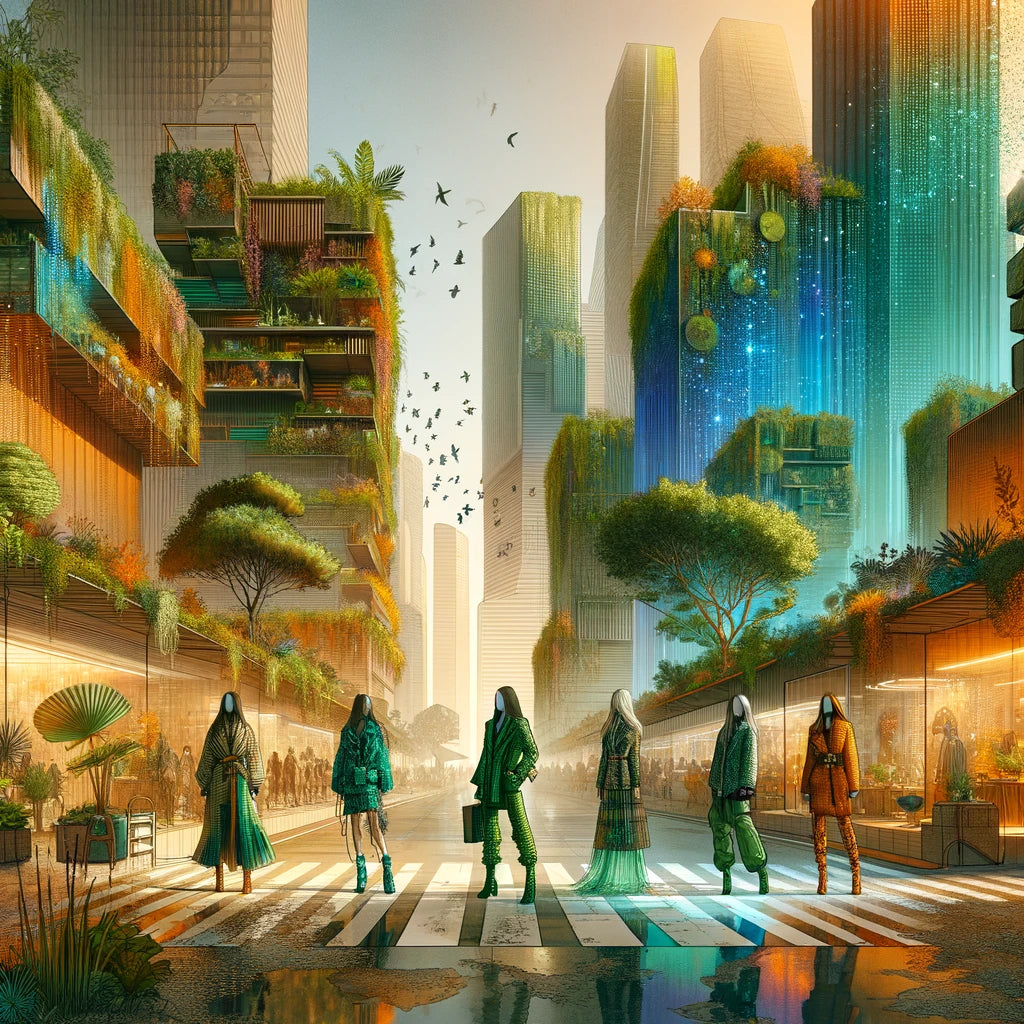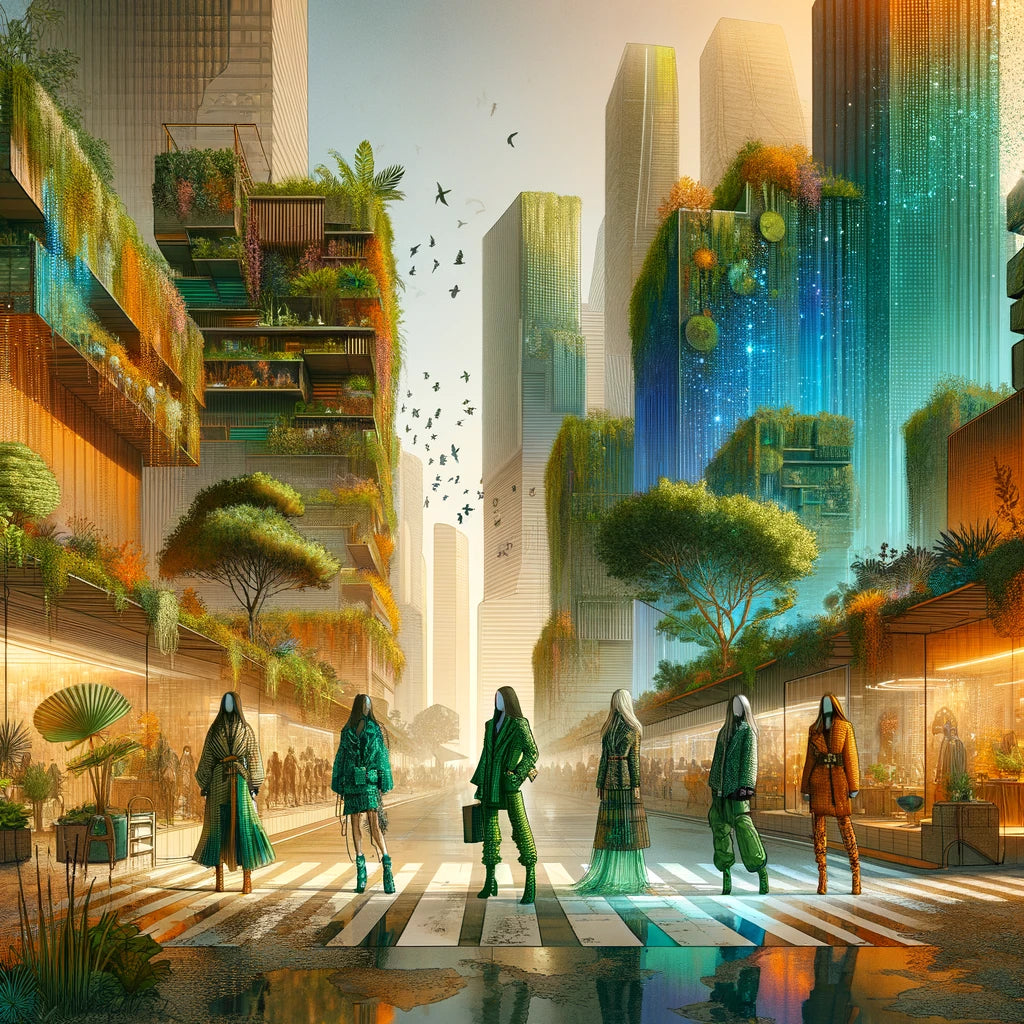Introduction to 2025's Fashion Landscape
As we edge closer to the year 2025, the fashion industry stands at the cusp of a revolutionary transformation. Driven by rapid advancements in technology, a renewed commitment to sustainability, and a deeper cultural shift towards individualism and diversity, the trends forecasted for 2025 promise to redefine our relationship with fashion. This article explores the pivotal trends expected to dominate the fashion forward ethos of 2025, highlighting the blend of innovation, creativity, and sustainability that will characterize the era.
Embracing Technological Innovations
Wearable Technology Integration
The fusion of fashion with technology is set to advance beyond functional fitness trackers and smartwatches. In 2025, wearable technology will seamlessly integrate into our daily wear, offering enhanced utility and connectivity. Imagine smart fabrics capable of changing color or pattern based on mood or environment, garments that monitor health metrics, and interactive accessories that connect with the digital world in groundbreaking ways. This trend signifies a move towards personalization and functionality, marrying tech with textiles in ways previously imaginable only in science fiction.
Sustainable and Smart Fabrics
As the demand for sustainability grows louder, 2025 will witness a surge in the development and use of sustainable and smart fabrics. Bio-fabrication, using living cells to grow materials, will become more mainstream, offering a greener alternative to traditional textiles. Fabrics that clean themselves, repair minor tears, or adapt to weather conditions will enhance the functionality of clothing, reducing the need for frequent washing and prolonging garment life. This not only aligns with the sustainability ethos but also introduces an element of high-tech innovation into everyday wear.
The Rise of Personalized Fashion
Customization and Co-Creation
The year 2025 will herald the age of ultra-personalization in fashion. With advances in 3D printing and AI-driven design, consumers will no longer be passive recipients of fashion trends but active co-creators. Customization will extend beyond simple size adjustments to encompass bespoke designs, where customers can manipulate digital templates to create garments that truly reflect their personal style and body shape. This democratization of design will empower consumers, making fashion more inclusive and individualistic.
Cultural and Artistic Expression
Fashion has always been a canvas for cultural and artistic expression, but by 2025, this will be amplified. The globalized world of fashion will embrace, more than ever, the fusion of traditional motifs with contemporary design, highlighting multiculturalism and diversity. Limited edition collections by artists and collaborations between designers from various cultural backgrounds will become more prevalent, celebrating global artistic heritage and creating garments that tell unique stories.
Commitment to Sustainability
Eco-Conscious Practices
Sustainability will no longer be a niche trend but a core principle guiding the fashion industry in 2025. From eco-friendly materials and ethical labor practices to circular fashion models, the industry will shift towards more sustainable practices. Brands will be expected to not only minimize their environmental impact but also actively contribute to ecological restoration. This will resonate strongly with consumers, who will favor brands that align with their values of environmental stewardship and social responsibility.
Revival of Vintage and Second-Hand
The appreciation for vintage and second-hand clothing will reach new heights in 2025, driven by a combination of environmental consciousness and a nostalgic yearning for the past. The trend will go beyond mere fashion recycling, embracing a cultural movement towards slower, more thoughtful consumption. Platforms facilitating the trade of pre-loved designer pieces will thrive, and fashion houses will explore archives to reintroduce classic designs with a modern twist, blending heritage with innovation.
Final Thoughts
The year 2025 promises a vibrant and hopeful vision for the future of fashion. As we navigate through this exciting era, the interplay of technology, personalization, and sustainability will be key in shaping a more inclusive, expressive, and environmentally conscious fashion landscape. Beyond mere aesthetic appeal, fashion will evolve to reflect our shared values and aspirations, heralding a new chapter of creativity and connection.

